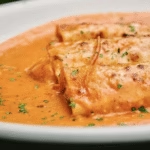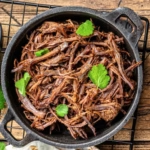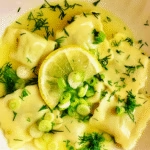
Pavlova
Pavlova is a show-stopping dessert that’s sure to impress. With its crispy meringue shell, soft, marshmallowy center, and a generous topping of whipped cream and fresh fruit, every bite offers a perfect mix of textures and flavors. Whether you’re celebrating a special occasion or simply adding a touch of elegance to your gathering, this sweet treat never disappoints.
Equipment
- Stand Mixer or Hand Mixer
- Spatula
Ingredients
- 4 egg whites room temperature
- 1 cup granulated sugar see note #2
- ⅛ tsp salt
- ¼ tsp cream tartar see note #6. for substitutes
- 1 tsp vanilla extract see note #5.
- 1 tsp corn starch
Toppings
- Fresh berries
- Lemon curd
- Coulis a thin fruit puree sauce
- Jams or Compotes fruit preserved or cooked in a syrup
Instructions
- Preheat the oven to 350°F (177°C). (Note: you will quickly reduce the oven to 200°F (93°C) in step #10.)
- Line two regular sized cookie sheets with parchment paper and set aside for later.
- Add eggs, salt, corn starch and cream tartar to a large mixing bowl. (see note #1.)
- With stand mixer or hand mixer, stir on low speed till it becomes foamy.
- Increase speed to high
- With mixer on high, gradually add in sugar approximately 1 tablespoon at a time (see note #3.)
- Beat mixture until thick and shiny. The mixture should have stiff peaks and sugar should be completely dissolved (see note #4.)
- Mix in the vanilla or any other flavor of choice (see note #5.)
- Spread the pavlova mixture into an 8-9-inch circle (see note #8 mini size). – You can make decorative peaks with the back of a large spoon or piping bag if desired. Make sure the edges are relatively taller than the center.
- Place the pavlova in the oven, as soon as you close the oven door, reduce heat to 200°F (93°C)
- Bake until the pavlova is firm and dry, about 90 minutes total. Rotate the baking sheet if you notice some spots browning.
- Try to limit how many times you open the oven as the cool air will interrupt the baking.
- Turn the oven off after 1 hour has passed and allowed the pavlova to rest in the oven for an additional hour.
- Once the pavlova has cooled, top the pavlova with whipped cream and your choice of toppings.
- Serve and enjoy.
Notes
- Ensure your egg whites are at room temperature before beginning.
- Room temperature egg whites whip faster and into a greater volume than cold egg whites.
- Be careful not to get any yolk into your egg whites; even the smallest amount can prevent them from whipping. It’s best to crack them in a separate bowl from your mixing bowl.
- Superfine sugar dissolves more easily into egg whites, helping to avoid any gritty texture. If you don’t have superfine sugar, you can pulse 1 cup of granulated sugar a few times in a food processor to create a finer sugar.
- Allow the mixture to stir for about 20 seconds between each tablespoon of sugar so it has time to dissolve.
- To check if the sugar has dissolved, rub a small amount between your fingers. If it still feels gritty, keep mixing.
- You can use any extract you like, such as orange, lemon, or almond. When adding extracts, start with ½ teaspoon and gradually adjust the amount to suit your taste. Some extracts, like peppermint, can be overpowering.
- If you don’t have cream of tartar, you can substitute lemon juice or white vinegar. Use double the amount of lemon juice for the substitution (1:2 ratio).
- Once the pavlova has cooled, store it covered at room temperature for up to 2 days, or serve it right away.
- Instead of spreading the pavlova mixture into one large circle, divide it into smaller individual portions.
- For mini pavlovas, bake at 200°F (93°C) for 35-40 minutes, instead of 90 minutes. Be sure to create a small dip in the center to hold the toppings.
Tried this recipe?
 Mention @thewifewiththeknife or tag #wifewiththeknife
Mention @thewifewiththeknife or tag #wifewiththeknife




